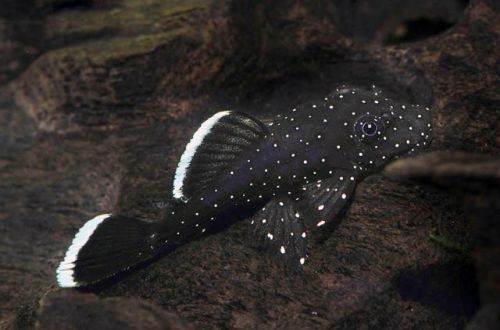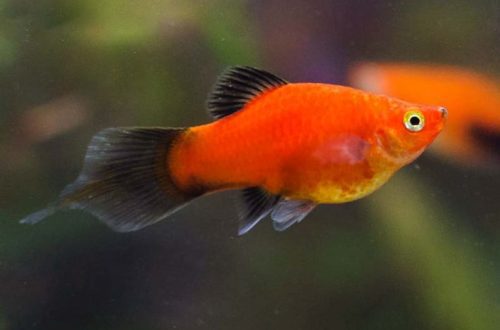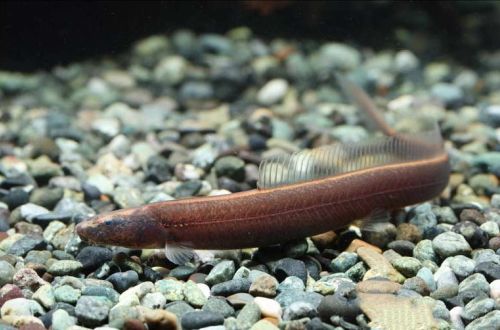
Ancistrus vulgaris
Ancistrus vulgaris, scientific name Ancistrus dolichopterus, belongs to the family Loricariidae (Mail catfish). Popular beautiful catfish of medium size, easy to keep and compatible with many other species. All this makes it a good choice for the beginner aquarist.

Contents
Habitat
Comes from South America. It was previously thought to be widespread throughout the Amazon Basin, as well as in the river systems of Guyana and Suriname. However, later studies have established that this species of catfish is endemic to the lower and middle reaches of the Rio Negro in the Brazilian state of Amazonas. And the fish found in other parts are very similar close relatives. The typical habitat is streams and rivers with brown colored water. A similar shade is associated with an abundance of dissolved tannins formed as a result of the decomposition of numerous fallen plant organic matter.
Brief information:
- The volume of the aquarium – from 200 liters.
- Temperature – 26-30°C
- Value pH — 5.0–7.0
- Water hardness – 1–10 dGH
- Substrate type – any
- Lighting – subdued
- Brackish water – no
- Water movement – light or moderate
- The size of the fish is 18–20 cm.
- Food – any sinking food
- Temperament – conditionally peaceful
- Keeping alone in company with other species
Description
Adult individuals reach a length of 18–20 cm. The fish has a flattened body with large developed fins. The coloration is black with bright white speckles and a contrasting light edging of the dorsal and caudal fins. With age, the specks become smaller, and the edging practically disappears. Sexual dimorphism is weakly expressed, males and females do not have obvious visible differences.
Food
Omnivorous species. In the aquarium, it is desirable to serve a variety of products that combine dry food (flakes, granules) with frozen foods (brine shrimp, daphnia, bloodworms, etc.), as well as herbal supplements. For example, spirulina flakes, pieces of vegetables and fruits that catfish will be happy to “nibble”. Important – feed should be sinking.
Maintenance and care, arrangement of the aquarium
The optimal size of the aquarium for one adult fish starts from 200 liters. In the design, it is recommended to recreate conditions reminiscent of a natural habitat – the bottom of a river with a slow flow of water with a sandy substrate and an intricate labyrinth of tree roots and branches.
Lighting should be subdued. If you plan to use live plants, then you will need to select shade-loving species that can attach to the surface of snags. Any vegetation rooted in the ground will soon be dug up.
A layer of leaves of some trees will complete the design. They will become not only part of the decor, but will also make it possible to give the water a chemical composition similar to that in which Ancistrus ordinary live in nature. During decomposition, the leaves will begin to release tannins, in particular tannins, which turn the water brown and help reduce pH and dGH values. More details in a separate article “The leaves of which trees can be used in an aquarium.”
Like most other fish that come from pristine natural habitats, they are intolerant of organic waste accumulation and require impeccable water quality. To this end, regular aquarium maintenance procedures are carried out and a productive filtration system and other equipment are installed.
Behavior and Compatibility
A peaceful calm species, preferring to stay in one place for a long time, hiding among shelters. May show intolerance towards other relatives and bottom-dwelling fish.
Fish diseases
The cause of most diseases is unsuitable conditions of detention. A stable habitat will be the key to successful keeping. In the event of symptoms of the disease, first of all, the quality of the water should be checked and, if deviations are found, measures should be taken to correct the situation. If symptoms persist or even worsen, medical treatment will be required. Read more about symptoms and treatments in the Aquarium Fish Diseases section.





